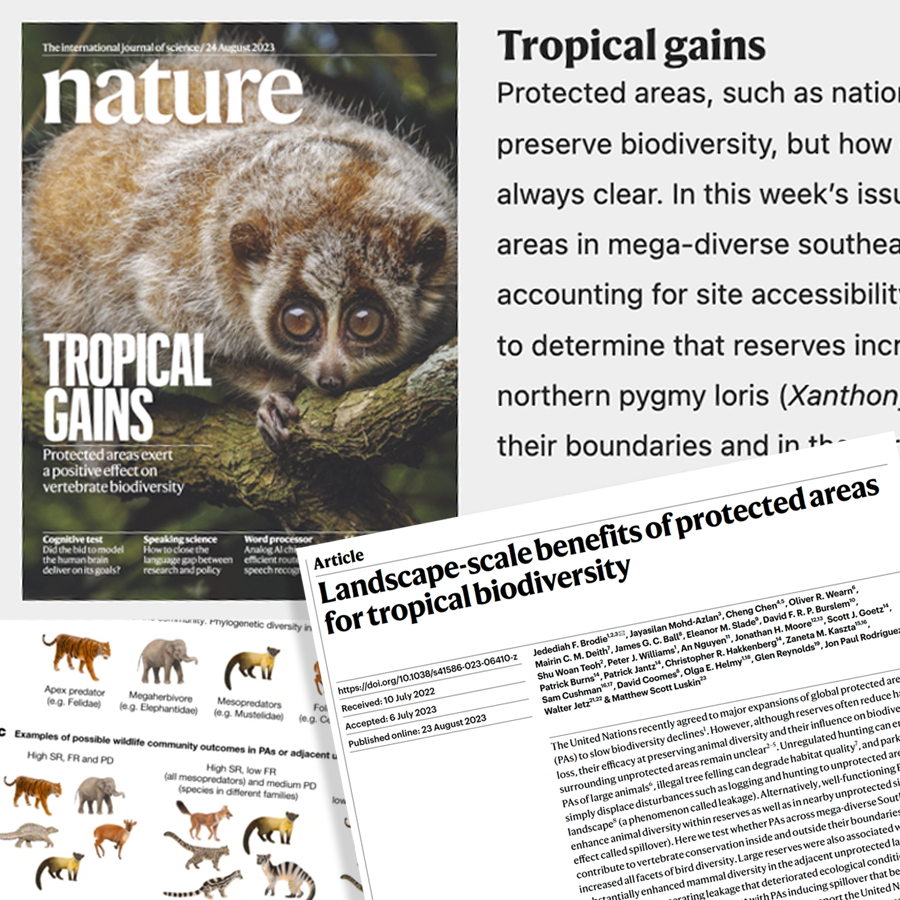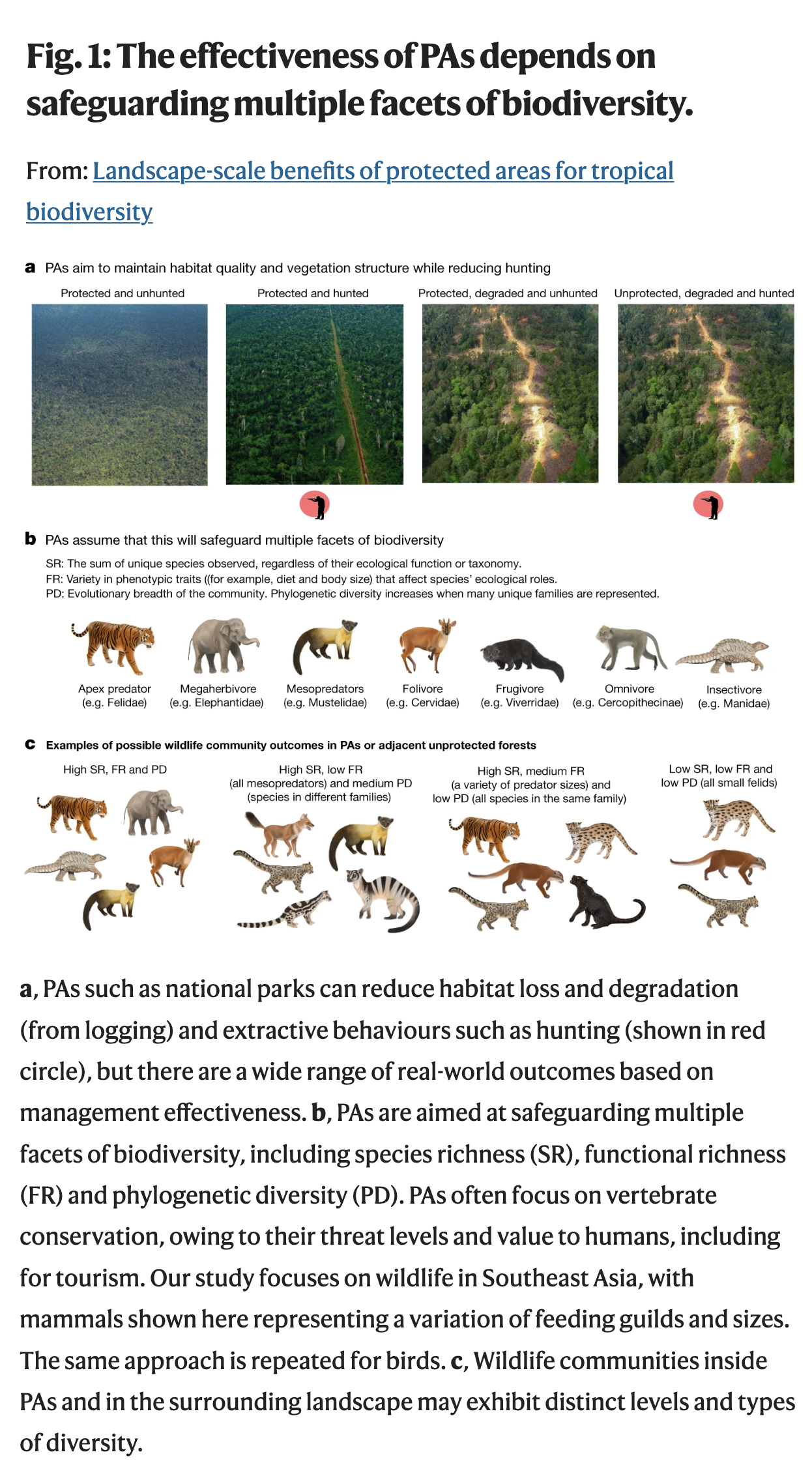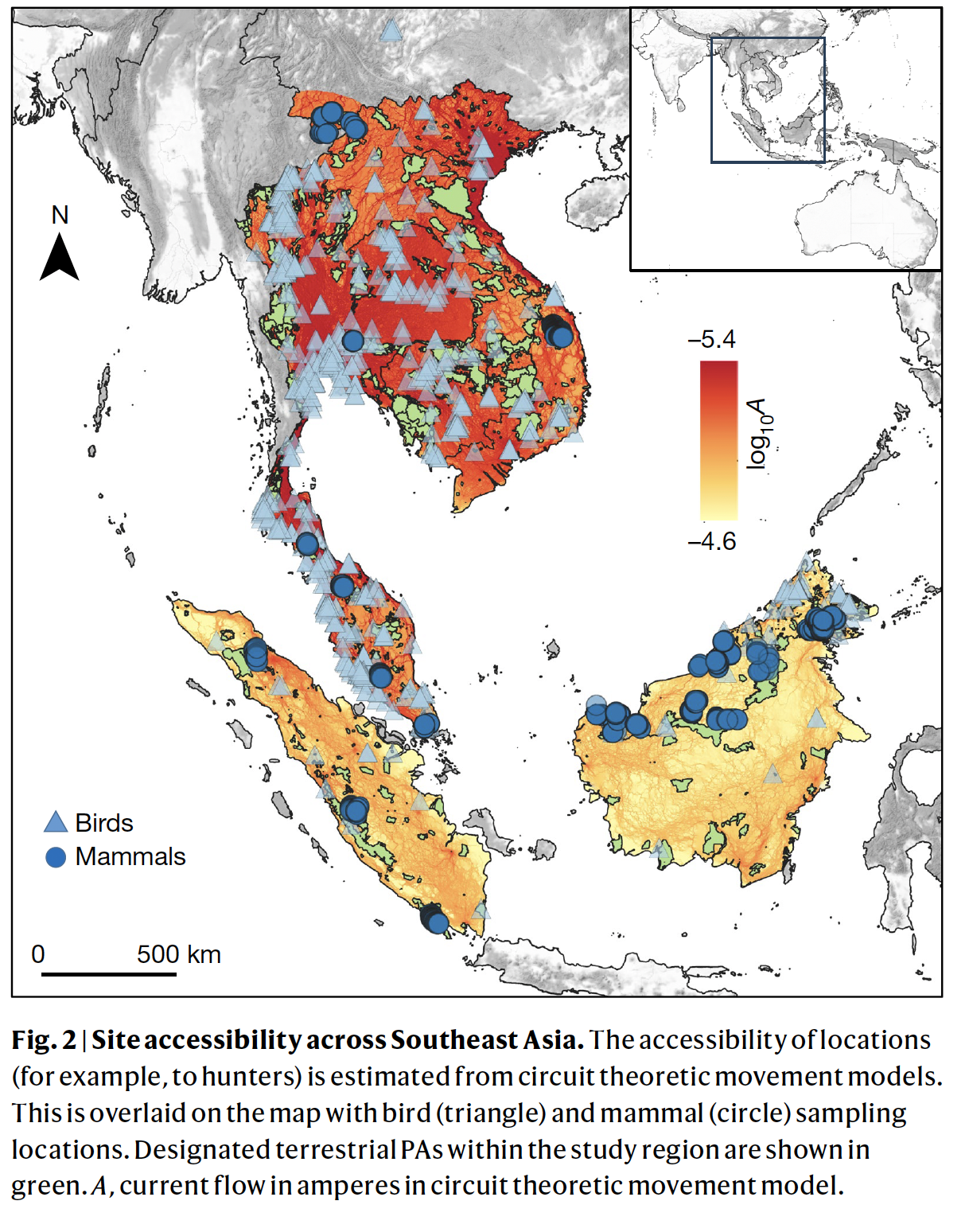News
New research shows wildlife overflow enriches biodiversity beyond protected area boundaries
WildCRU’s Dr Żaneta Kaszta & Dr Sam Cushman are co-authors of new research demonstrating how protected areas enhance biodiversity both inside and beyond their borders. Featured as Nature’s cover story this week, the study used more than 2,000 camera traps and bird surveys across Southeast Asia. It also used new NASA space-borne LIDAR.
The paper’s findings demonstrate the considerable benefits of protected land areas around the globe even beyond their boundaries. Previous studies have shown how marine parks often result in biodiversity spill-over i.e. when fish and other species reproduce successfully inside park boundaries and their offspring disperse into surrounding habitats. This research now clearly demonstrates the benefits that large protected areas have for terrestrial mammals.
Second author Dr Matthew Luskin said, “Specifically, we found that when comparing unprotected areas nearby large reserves to unprotected areas that didn’t border large reserves, large reserves generated an up to 194 per cent boost in mammal diversity.”
The study’s results provide a welcome conservation win for large reserves in the mega-biodiverse Southeast Asian region, which is under severe threat from hunting and deforestation. Hunters are mobile and there is some concern that hunting bans within parks could just displace hunting to surrounding areas, undermining the parks’ net benefits. Researchers had thought that hunting of game animals would reduce overall biodiversity, but this work shows that parks limit hunting to the extent it doesn’t completely remove these animals. It also demonstrates the considerable benefit of large protected areas in supporting wide-ranging animals, such as tigers and elephants that move across entire landscapes, including protected and unprotected areas.
Sam Cushman noted “I am not surprised that there is a spill-over effect of biodiversity from protected areas given what is known about source-sink dynamics. Protected areas are typically sources for wildlife populations, given they protect habitat and reduce human-driven mortality rates. However, seeing enhanced numbers of animals surrounding protected areas does not show if these are sink habitats or also parts of expanded sources. There are large differences in implications for populations depending on whether these adjacent areas are sinks and if so how strong a sinks they are. Further work should explore the demographic implications of this.”
Zaneta Kaszta said “It is very exciting to explore capabilities of new NASA space-borne LiDAR for biodiversity analysis and to measure the impact of protected areas on species diversity.”
This research supports efforts to push for geographically larger protected areas. Lead author, Dr Jedediah Brodie from the University of Montana, and the Universiti Malaysia Sarawak, said “Larger parks routinely had higher bird diversity, and considering the UN’s 30 by 2030 goal, these findings support the creation of fewer larger parks compared to many smaller ones.”
Moving forward, the researchers aim to quantify shifts in abundance of mammals and birds inside and outside of parks and expand their work to other regions. They hope to further clarify the relationship between park types and biodiversity to ensure optimal conservation outcomes.
The paper is available here: https://rdcu.be/dkd82
Brodie, J.F., Mohd-Azlan, J., Chen, C. et al. Landscape-scale benefits of protected areas for tropical biodiversity. Nature 620, 807–812 (2023). https://doi.org/10.1038/s41586-023-06410-z








